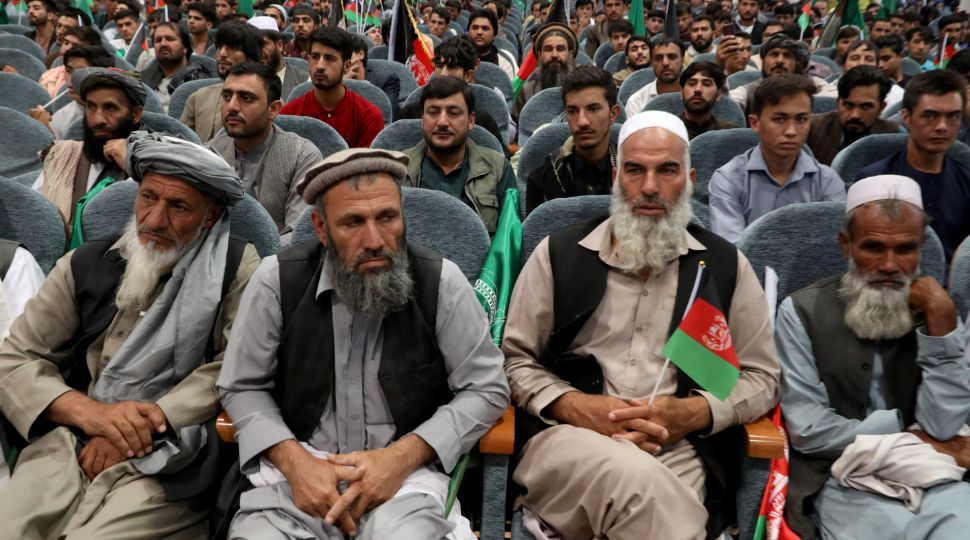The Future of Afghanistan: Talks between the U.S. and the Taliban

Zalmay Khalilzad, the U.S. Special Representative for Afghanistan Reconciliation, announced on 26 January that the recent six-day negotiations with the Taliban in Qatar led to “significant progress on vital issues” and arrival at a “draft of the framework” for an agreement. The Taliban pledged to prevent Afghanistan from ever becoming a platform for international terrorist groups or a place for individuals to prepare attacks against the U.S. and its allies. The United States has offered, under certain concessions, to withdrew troops from the country. The declarations of both parties constitute the grounds for the key phase of the talks, which are to resume by the end of February.
U.S. Aims
Attempts at peace talks between the U.S. and the Taliban and the search for a political solution to the war in Afghanistan have been made since at least 2010. President Barak Obama’s administration set three conditions for the Taliban: breaking ties with al-Qaeda, renouncing violence and accepting the current constitution of Afghanistan. Trump’s strategy towards Afghanistan, announced in August 2017, was to bring the Taliban to the negotiating table by intensifying military pressure on them and increasing diplomatic pressure on Pakistan. Although both elements played a role, Trump’s readiness to withdraw U.S. troops was crucial in getting the Taliban to talk. In December 2018, the U.S. leaked plans to reduce forces in Afghanistan by half (up to 7,000), despite Trump’s strategy talking about an open-ended military presence decided by “conditions on the ground” and not “arbitrary timetables.” After Defence Secretary James Mattis and other supporters of engagement in Afghanistan resigned, Trump gained more freedom to end what has become the longest war in U.S. history, which has cost more than a trillion dollars and the lives of more than 2,400 American soldiers.
The concessions announced by the Taliban (cutting ties with al-Qaeda and the Islamic State) are hardly a breakthrough, given that the former has been severely weakened in Afghanistan and the latter is the Taliban’s greatest enemy. However, the U.S. expects that a readiness to withdraw troops will induce the Taliban to call a ceasefire and engage in direct talks with the Afghan government. Khalilzad’s assurance that “nothing is agreed until everything is agreed” suggests that the U.S. will support an Afghan-led and Afghan-owned process. However, Trump’s political calculations may lead to a reduced military presence earlier than that. He will probably seek to proclaim the success of the mission and withdraw soldiers to the U.S. before the presidential election in 2020. The future of American bases in Afghanistan may also prove controversial. Although the U.S. would like to keep some of them to retain strategic influence in the region, this may be unacceptable for the Taliban.
The Taliban’s Position and Goals
The Taliban are joining talks with the U.S. from the position of strength. Therefore, they maintain pressure by continuing military activities. The control and influence of the Afghan government have been decreasing regularly. According to latest U.S. estimates, the government controls 56% of the territory, inhabited by 63.5% of the population (21.5 million people). The Taliban predominate in 17% of the country (inhabited by 3.6 million people), and another 27% is contested. According to media reports, the Taliban are present in more than half of the territory and able to carry out attacks in nearly 70% of the country. There are over 60 security incidents daily, and about 3,500 civilians are killed every year. Afghanistan’s President Ashraf Ghani disclosed in January that more than 45,000 members of the Afghan security forces have already died in action since 2015, confirming the growing threat from the Taliban.
The main and unchanging goal of the Taliban since 2001 is the total withdrawal of foreign forces. This will allow the introduction of Sharia law, although probably in a less radical version than in the 1990s. The Taliban have consistently rejected any talks with the government in Kabul, which they view as a U.S. puppet. They present themselves as a national liberation movement fighting against foreign occupation. It gives them real support among the Pashtuns (about 40% of the country’s population) from which they originate, as well as other groups discouraged from supporting the current authorities by their ineffectiveness, political infighting or corruption.
However, it will be difficult for the Taliban to impose its power on other ethnic groups (such as the Tajiks, Hazaras and Uzbeks), or on people supportive of the achievements of recent years (such as women’s rights and freedom of the press). The Afghan security forces have almost 310,000 members, compared to some 50,000 to 60,000 Taliban fighters. Awareness of these restrictions may induce the Taliban to compromise. Mullah Baradar, second in the Taliban hierarchy, released after eight years in a Pakistani prison, has been appointed chief negotiator in Qatar, indicating that the organisation is taking the talks seriously. At the same time, knowing the American election calendar, they may only want to gain time and wait for the withdrawal of the U.S. before taking full power. They also hope that the talks themselves will bring tangible benefits such as the release of prisoners and the lifting of UN sanctions.
Threats and Challenges
The fundamental challenge is to get the Taliban to agree on a ceasefire and engage in direct talks with the Afghan government. Even if this can be achieved, any future power-sharing agreement remains an open issue. Ghani strongly rejects the possibility of establishing a transitional government or changing the constitution. As one of 17 registered candidates in the presidential election planned for July, he expects the Taliban to respect the democratic process. Their boycott of earlier elections suggests that it is unlikely. The Taliban is more likely to seek to overhaul the system completely to make it better suited to local conditions. This would, however, require extensive consultation (for example, in the form of a Loya Jirga, or grand tribal council) covering not only the incumbent government and the Taliban but also the most important forces, ethnic and political leaders and influential warlords.
Talks could also be complicated by parallel formats of negotiations and conflicting interests of third countries. Pakistan, which has the biggest influence on the Taliban, has so far played a positive role in facilitating talks, but it is uncertain whether it will allow Afghans to negotiate independently. Russia, Iran and China also opened their own channels of contacts with them, and India is planning a similar move. At the beginning of February, the Taliban met in Moscow with representatives of the Afghan political opposition, without the involvement of the government in Kabul, which only increased divisions between the various political forces. Finally, the challenge will be to enforce a possible agreement and ensure peace after the withdrawal of foreign troops from states which will all be reluctant to return to Afghanistan if, for example, the Taliban break the terms of the agreement.
Conclusions and Prospects
Talks between the U.S. and the Taliban are still in the early stages, and there is a risk that they will end in failure. So far, they have brought more benefits to the Taliban by legitimising them as a political force and giving them a major say on the future of Afghanistan, marginalising the government in Kabul. As a result, instead of adapting to existing power structures, it is likely that the Taliban will strive to create a new political system in the country. The precipitous exit of U.S. troops may make it easier for them to take power completely, or lead to a repetition of the situation of the 1990s. That period was marked by open civil war, destabilisation of the region, humanitarian and refugee crises and Afghanistan becoming a base for global jihadists.
Therefore, reducing the U.S. military presence should depend on the achievement of a political agreement between the Taliban and the Afghan government. The promise of continued significant economic and military assistance after the end of the NATO mission will also be a useful incentive for the Taliban to compromise. It will be necessary to include the main regional players (Pakistan, India, Iran, China and Russia) and win their support for the intra-Afghan peace deal and its implementation. Finally, it is worth considering extending the interim period of the UN mandate and sending peacekeeping forces to replace NATO as a stabilising factor. For Poland, a peace agreement would mean the return home of more than 300 soldiers from the NATO mission and the expectation that Allies would commit to further financial support for Afghanistan.




